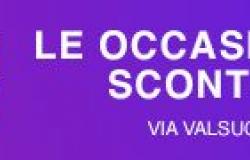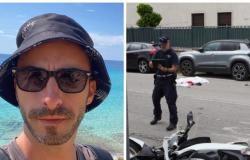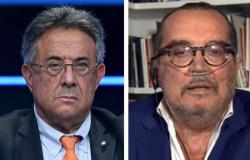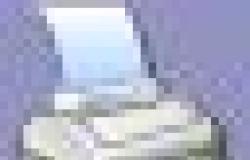Inaugurates a Capri Saturday 27 April at 12 at the Certosa di San Giacomothe exhibition «Locus Solus/Solis: Luce Fuoco Volo» by Marco Bagnoliedited by Marina Guida.
The project, designed specifically for the fourteenth-century Carthusian church, is organized by the Turin gallery Giorgio Persano, by Studio Trisorio, and by the Atelier Marco Bagnoli, in collaboration with the Campania Regional Museums Directorate and with the patronage of the City of Capri.
An exhibition itinerary in which each installation is placed in dialogue with the architecture and mystical atmosphere of the venue, creating an immersive and hypnotic experience.
Starting from the entrance, in the single nave of the Church, we find the ceramic sculpture Noli me Tangere on Mandalas of all directions, followed by a monumental bamboo hot air balloon almost six meters high. The sky covers the earth supports. Continuing, on the altar we encounter the alabaster Sonovasoro, from which a sound carpet emanates that recalls the sound of a shamanic drum, while on the right of the nave we find the fourth work, Dove Porta 2, a large alabaster painting marked vertically by a red band, created following the proportions of the golden section. In the side chapel we find the work Aleph: sixty-four prints arranged in a radial pattern on the floor.
Special lighting will also be arranged in the Church, to allow the video projection of the work: Body of Light, a luminous hot air balloon, and the shadow of the statue of Apollo corresponding to the sculpture E of Delphi, located in the side chapel of the Church, of which it ideally represents its reflection.
Key concepts such as fire, flight, light can in some way “anthropomorphize” space, understood as an isolated, solitary and mysterious place.
«Almost as if it were the metaphor of the human being, of his fulfillment individually, sometimes in complete solitude but, at the same time, in an inevitable, more necessary and innate relationship/connection with the profound Self, with the other than himself, with the laws of the Cosmos.” The curator underlines Marina Guida.
Fire is the symbolic cornerstone of the exhibition.
Alchemical element par excellence, as it heats, burns, destroys, but at the same time purifies, pushes upwards into the celestial dimension, transmutes. Through the evocative image of a hot air balloon rising towards the sky, the exhibition suggests a perspective fascinating: fire not only as a destructive element, but above all as a driver of elevation and transformation, a spiritual element of awareness and knowledge and a gateway to a new perceptive dimension.
When crossing the threshold of the church, the eye intercepts a dark, mysterious space, captures a play of shapes, of profiles that tend upwards following one another in the nave in a seamless continuation. An enigmatic path poised between visible and invisible, immanence and transcendence, physical and metaphysical plane.
The sound element, so important for the fullness of the project, completes the journey in which the spectator takes part as a central element, inserting itself into an exhibition that presents itself exactly as an itinerary between the real and the imaginary, an enigmatic path that leads to a condition of temporal suspension, through the use of the works as necessary tools for the realization of the experience of elsewhere.
The double title of the exhibition (Locus Solus/Locus Solis) refers to a double interpretation: the first is inspired by Raymond Russel’s novel, in the triple meaning of “solitary place”, “singular place” or “unique place”. The second title instead refers to a place of inner research and spiritual enlightenment, an indication of that Gate-of-the-Sun about which he wrote Ananda K. Coomaraswamy in his essay «The “E” at Delphi».
The idea of «Locus Solus/Solis» is associated with an extraordinary or fantastic place, an environment that is different from everyday reality. A different and remote territory which can be accessed from the metaphysical gate which invites us to explore new conceptual horizons and challenge the conventional boundaries of perception and understanding of the planes of existence.
Marco Bagnoli, manages to convey a sense of disorientation and enigma through works that blend harmoniously with the mystical essence of the place. A journey into mystery and silence, which brings to mind the evocative memory of the now lost Grotta Oscura, on which the Certosa di Capri was built, which brings with it the symptom of introspection, of concentration, as befits an isolated enclosure in the original meaning of the word Certosa.
Marco Bagnoli
Marco Bagnoli he is one of the most significant exponents of the artistic trends that established themselves in Italy at the end of the seventies. After training in the scientific field, the artist develops research that intentionally links back to the Italian Renaissance, to a cultural tradition in which philosophy and science are an integral part of the work. He participates in the Venice Biennale (1982, 1986, 1997) and the Documenta in Kassel (1982, 1992), experimenting with complex installations that involve the environment with the competition of multiple expressive means, from drawing to painting, from printing to sculpture. Over the years, fueled by continuous studies and travels, in his works he has drawn suggestions from Islamic culture, from the mystical poetry of the Persian Rumi, from Sufism, from the doctrines of Hinduism and Tao, from Pythagorean philosophy. In 1995 he exhibited his personal work at the Luigi Pecci museum in Prato. Worth mentioning is the altar created between ’94 and ’95 in the church of S. Miniato al Monte in Florence at the behest of the Benedictine Fathers. In ’96 he created an installation for the exhibition “Accumulations 2” conceived by Rudi Fuchs in the Zerynthia venue in Paliano. In 2017 the Atelier Marco Bagnoli opened in Montelupo Fiorentino, a multifunctional space, which the artist conceived together as a total work of art.
Tags: Luce Fuoco Volo Marco Bagnoli edited Marina Guida






